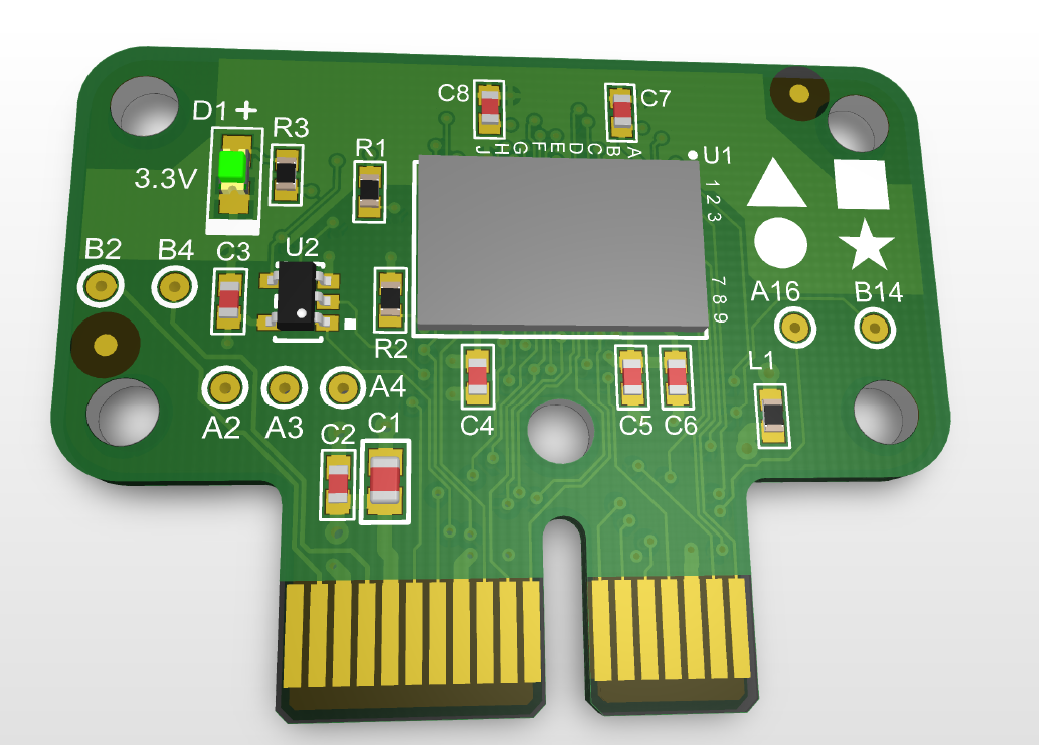I have an xCORE-200 USB sliceKIT and am trying to get the SDRAM slice card to work with a small demo program of my own. Here's the code:
Code: Select all
/*
* SDRAM Playground.xc
*
* Created on: Mar 25, 2016
* Author: Amandio
*/
#include <platform.h>
#include <xs1.h>
#include "sdram.h"
#include "memory_address_allocator.h"
#include <stdio.h>
#define BUFFERSIZE 1024
#ifndef SDRAMTILE
#define SDRAMTILE tile[1]
#endif
on SDRAMTILE: out buffered port:32 sdram_dq_ah = XS1_PORT_16A;
on SDRAMTILE: out buffered port:32 sdram_cas = XS1_PORT_1B;
on SDRAMTILE: out buffered port:32 sdram_ras = XS1_PORT_1G;
on SDRAMTILE: out buffered port:8 sdram_we = XS1_PORT_1C;
on SDRAMTILE: out port sdram_clk = XS1_PORT_1F;
on SDRAMTILE: clock sdram_cb = XS1_CLKBLK_1;
int CompareMovableBuffer( unsigned * movable buffer, unsigned * bufferCopy, unsigned length){
for ( int i = 0; i < length; i++){
if(buffer[i] != bufferCopy[i]){
printf("buffer[%d] = %d bufferCopy[%d] = %d\n", i, buffer[i], i, bufferCopy[i]);
return 0;
}
}
return 1;
}
void app(streaming chanend c_sdram, client interface memory_address_allocator_i mem_alloc){
s_sdram_state sdram_state;
sdram_init_state(c_sdram, sdram_state);
unsigned buffer[BUFFERSIZE];
unsigned bufferCopy[BUFFERSIZE];
unsigned * movable buffer_pointer = buffer;
unsigned seed = 98;
unsigned base_address;
mem_alloc.request((BUFFERSIZE * sizeof(unsigned)), base_address);
unsigned result = sdram_read(c_sdram, sdram_state, base_address, BUFFERSIZE, move(buffer_pointer));
sdram_complete(c_sdram, sdram_state, buffer_pointer);
for (int i = 0; i < BUFFERSIZE; i++){
seed %= 0xFFFF;
buffer_pointer[i] = seed;
bufferCopy[i] = seed;
crc32(seed, 77, 9890);
}
result = sdram_write(c_sdram, sdram_state, base_address, BUFFERSIZE, move(buffer_pointer));
sdram_complete(c_sdram, sdram_state, buffer_pointer);
for (int i = 0; i < BUFFERSIZE; i++){
buffer_pointer[i] = 0;
}
result = sdram_read(c_sdram, sdram_state, base_address, BUFFERSIZE, move(buffer_pointer));
sdram_complete(c_sdram, sdram_state, buffer_pointer);
if (CompareMovableBuffer(move(buffer_pointer), bufferCopy, BUFFERSIZE)) printf("Arrays MATCH!\n");
else printf("Arrays DO NOT MATCH!\n", BUFFERSIZE);
while(1);
}
int main(){
streaming chan c_sdram[1];
interface memory_address_allocator_i mem_alloc_i[1];
par{
on SDRAMTILE: sdram_server(c_sdram, 1,
sdram_dq_ah,
sdram_cas,
sdram_ras,
sdram_we,
sdram_clk,
sdram_cb,
2, 128, 16, 8, 12, 2, 64, 4096, 4); // I don't know what these integer arguments mean yet.
on SDRAMTILE: memory_address_allocator(1, mem_alloc_i, 0, 1024*1024*8);
on SDRAMTILE: app(c_sdram[0], mem_alloc_i[0]);
}
}
Here's a picture of my setup:
[thumbnail]https://www.anony.ws/i/2016/03/29/0329161643.jpg[/thumbnail]
I've got the SDRAM sliceCard connected to the Type 3/7 connector and I have the jumper on J14 across pins 1 and 2. In the code above I've place all port definitions and tasks in tile 1 since that is where the pins on the Type 3/7 connector map to.
My problem is that if I define BUFFERSIZE to anything greater than 13, I start to see differences in the array read back from the SDRAM slice card. For example, if I define BUFFERSIZE to be 14, then the last index fails the match. If I define it to be 1024, I can see that some inidices after a certain point contain garbage values but eventually pick up from where they left off so it looks like indices that do match are now offset.
I uploaded the project to my Google Drive if anyone wants to take a look at it:
SDRAM_Playground
I'm using lib_sdram v3.0.2. I followed along the lib_display_controller which uses sdram heavily as guidance. I couldn't find anything too different in how it is accessing the sdram server.
Has anyone had much luck and/or experience using the SDRAM sliceCard who can give me some pointers?
Thanks!




